6. The Kennedys
A powerful family in the United States in the 50-60s of the 20th Century, that played an important role in the social and political life of the country at the time.
Famous for:
I. John F.Kennedy
II.Jackie Kennedy
III. Robert Kennedy
II. Jacqueline (Jackie) Kennedy Onassis
(July 29, 1929 - May 19, 1994)
First Lady of the United States
from 1961 until her husband's assassination in 1963
A fashion icon, remembered for her contributions to the arts and
preservation of historic architecture, her style, elegance and grace.

Jacqueline Lee Bouvier was born into New York society, the eldest daughter of John "Jack" Vernou Bouvier III (1891 - 1957), a playboy stockbroker of French descent, and his wife, Janet Norton Lee (1906 - 1989), a bank president's daughter. Her maternal great-grandfather, a potato-famine Irish immigrant, was a superintendent of New York City public schools, though Janet Lee Bouvier preferred to tell people that he was a Maryland-born veteran of the United States Civil War. Her parents divorced when she was young and her mother remarried.
As a child, Kennedy Onassis was a well-trained equestrian and loved horses (and always would, even as an adult.) She won several trophies and medals for her riding and the ample land in Hammersmith Farm gave her something to appreciate in the home of her stepfather. She loved writing poems and apparently adored her father. Her mother was said to be old-fashioned and strict, instilling in her children a strong sense of etiquette, manners, dress, and upper-class customs. While Jacqueline and her father had a warm and affectionate relationship, her mother was apparently more controlling.
After being named "Debutante of the Year" for the 1947-48 season, she was educated at Miss Porter's School, Vassar College and George Washington University, and spent time studying in France. Her stay in France was, it seems, one of the most enjoyable of her life: he learned a great deal and developed a deep love for France and its culture, a love that would later be reflected in many aspects of her life, such as the menus she chose for the White House state dinners and her taste in clothing. She spoke French and Spanish fluently, and her name was pronounced in French fashion as JACK-leen. She then moved on to her first real job as a photographer (nicknamed "the inquiring camera girl") for the Washington Times-Herald, which is how she came to meet many Washington politicians, including her first husband.
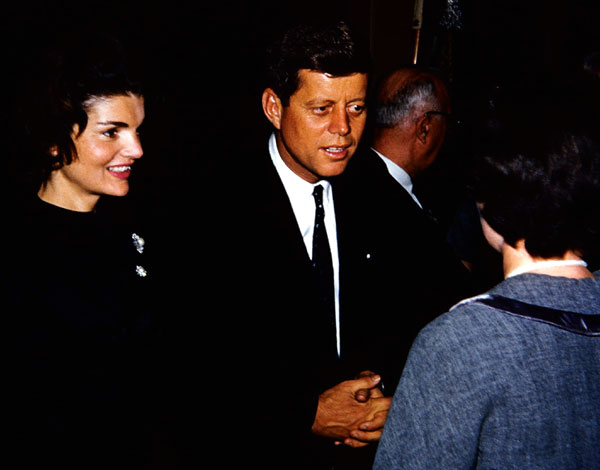
After and engagement to stockbroker John Husted, Jr. (they were to have married in June 1952), she married Senator John F. Kennedy, one of the Democratic Party's rising stars, on September 12, 1953, at Newport, Rhode Island. They had four children: Arabella, Caroline, John Fitzgerald Jr, and Patrick (born and died in August 1963). Their marriage had its difficulties as her husband was allegedly a womanizer and had serious health problems, but she apparently overlooked many of his affairs.
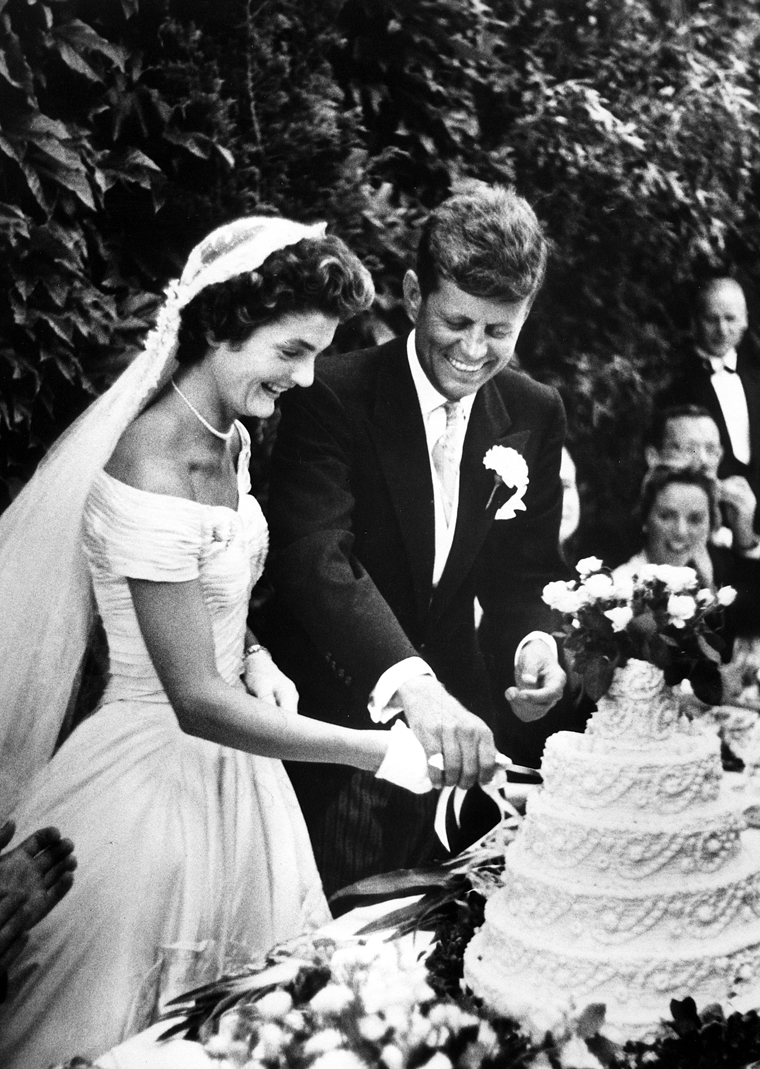
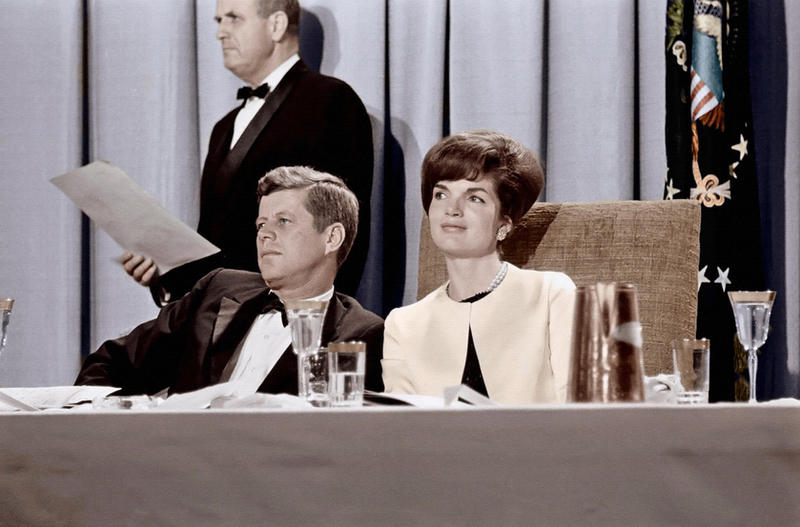
She was fond of her father-in-law, and the affection, it seems, was returned. He also saw the great PR potential of her as a politician's wife. She was also close to her brother-in-law, Robert (Bobby). Yet she was not fond of the competitive, sporty, and somewhat abrasive nature of the Kennedy clan. She was quieter and more reserved. The Kennedy sisters named her "the deb", and Kennedy Onassis was always reluctant to join in the traditional touch-football games of the Kennedy clan.
As First Lady ( a title she wasn't fond of, saying it sounded like the name of a horse), she was forced into the public spotlight with everything in her life under scrutiny. She had a strong preference for French haute couture designers who were expensive, and wearing their clothes might be perceived as disloyalty to American designers. She often got around such restrictions by having American dressmakers like Chez Ninon in New York copy or adapt contemporary French designers for her. During her days as First Lady, she would become a fashion icon domestically and internationally.

On February 14, 1962, she took American television viewers on a tour of the White House. The redecoration of the White House was her first major project. What inspired her were her visits to there before she was First Lady and being disappointed by what she saw as the lack of historical sense in the rooms. Being an avid lover of history, she felt that the mansion that represented her nation should represent in well. She hired a special commission and raised funds. They worked hard at finding authentic furniture and art that would fit the original design of the White House. They searched for original portraits of people like Jefferson and Franklin.
As First Lady, she knew her children would be in the public eye, yet she was determined to protect them from the press and give them a normal childhood.
Jacqueline and her husband planned many social events that brought them to the forefront of the cultural spotlight. They were not like presidential couples before them; they had an appreciation for art, music and culture. They invited artists and musicians for dinner parties, hosted a special celebration in honor of Nobel Laureates, invited celebrities over, and transformed White House state dinners.
Jacqueline Kennedy was sitting next to the President when he was shot and killed on November 22,1963 in Dallas, Texas. Mrs. Kennedy testified to the Warren Commission that she saw a piece of the President's skull detached, yet as documented in the Zapruder film, her head was not in a position to allow her to see the top of the president's head until almost a second after he was shot. Within seconds she climbed onto the left-center rear of the limousine trunk, behind and left of the president, and quickly picked up a piece of her husband's head, which she gave to a Parkland Hospital doctor.
Her courage in the aftermath of the assassination won her the admiration of the world. She led the mourning for the president, holding her two children's hands, kneeling at the bier along with her daughter in the United States Capitol, walking behind the caisson on foot from the White House to St. Matthew's Cathedral, where the funeral mass was held, and finally, lighting the eternal flame at her husband's grave at Arlington National Cemetery. The London Evening Standard reported: "Jacqueline Kennedy has given the American people one thing they have always lacked: majesty."

She made no public appearances for one year, and thereafter largely withdrew from public life because of privacy and security concerns.
On October 20, 1968, she married Aristotle Onassis, a Greek-shipping tycoon, in Skorpios, Greece, thus losing her Secret Service protection. When her former brother-in-law Robert F. Kennedy was assassinated three months earlier, Kennedy Onassis decided the Kennedys were being "targeted", and that she and her children had to leave the U.S. So marriage to Onassis appeared to make sense: he had the money and power to give her the protection she wanted, while she had the social caché he craved. He ended his affair with opera diva Maria Callas to marry Jacqueline.
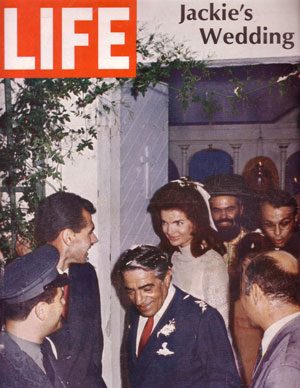

The marriage allegedly was not a love match. The couple rarely spent time together. Though Onassis got along with Caroline and John Jr. (his son Alexander introduced John to flying; both would die in plane crashes), Kennedy Onassis did not get along with her step-daughter Christina Onassis. She spent most of her time travelling and shopping (a hobby that exasperated President Kennedy, who once asked a friend "Is there a "Shoppers Anonymous's?"). Though he was in the early stages of filing for divorce, Onassis died on March 15, 1975, leaving his wife a large inheritance.
When a paparazzo photographed Jacqueline Kennedy Onassis nude on a Greek island, Hustler publisher Larry Flynt bought the photos and published them in the August 1975 issue, much to Jacqueline's and the Kennedy family's embarrassment.
She spent her latter years as an editor at Doubleday, living in New York City and Martha's Vineyard with Maurice Tempelsman, a Belgian-born married industrialist and diamond merchant. In 1994, she was diagnosed with lymphoma, a form of cancer. She died from this at her Fifth Avenue apartment in her sleep on May 19 that year (aged 64) .
Her funeral on May 23 was televised around the nation, even though it was private, the way she wanted it to be. She was buried beside her assassinated husband at Arlington, which too, was private, but it included remarks from President Bill Clinton.
During the service, the two Kennedy children laid flowers on her flower-covered mahogany casket, bidding goodbye to a remarkable era in American history.
Quotes:
"One must not let oneself be overwhelmed by sadness."
"He didn't even have the satisfaction of being killed for civil rights...it had to be some silly little Communist."
"I want to live my life, not record it."
source: http://jacquelinekennedy.net
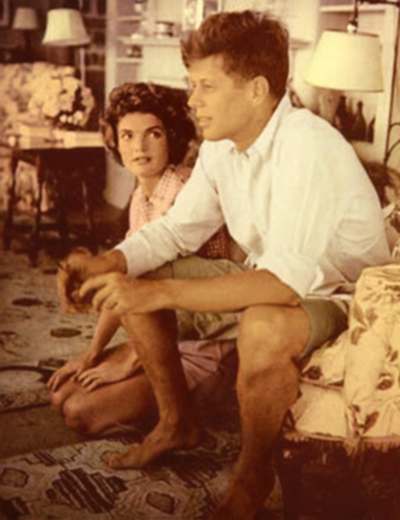



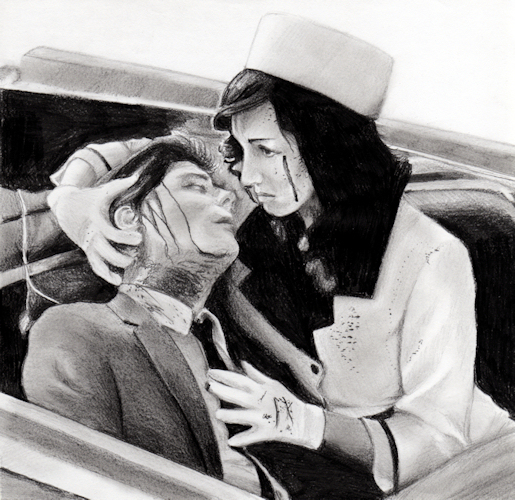
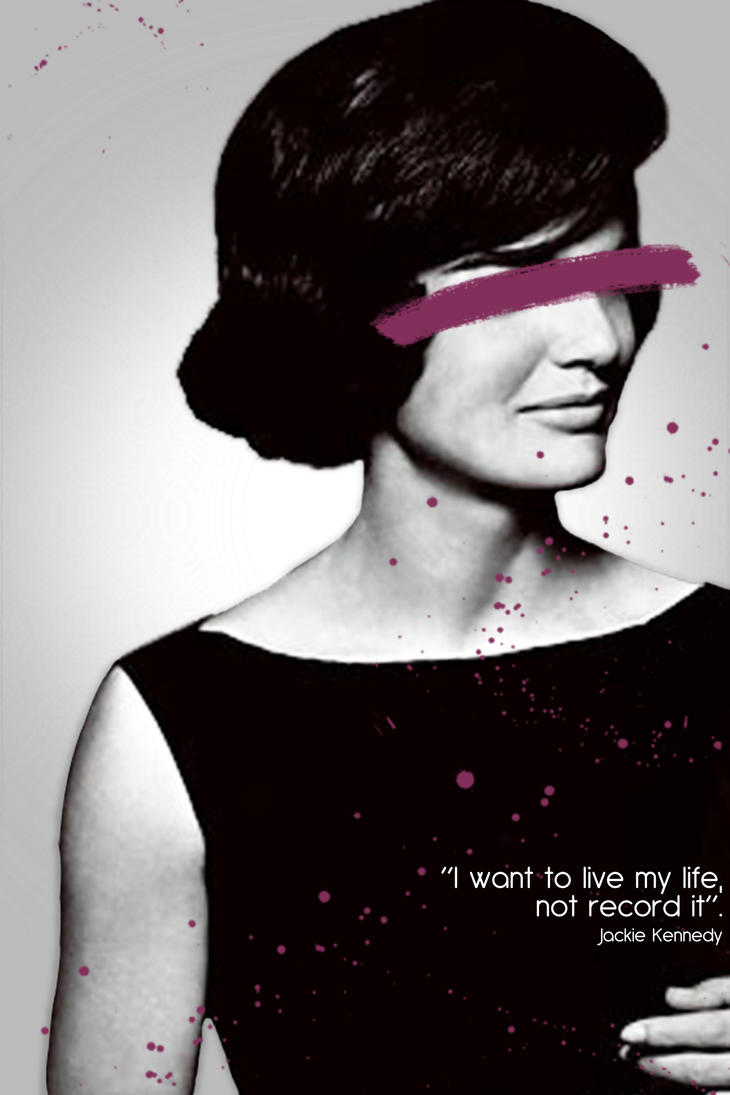
защо след изстрела тя се катери по задната част на колата? винаги съм се чудила
ReplyDeleteИма две версии:
ReplyDelete1. търси помощ от агента
2. взима хвръкнало парче от скалпа на Джон Кенеди
:((( вторият изстрел е толкова брутален, че стомахът ми се свива на топка като гледам... сърцето ми се къса ;( Никой не заслужава това...